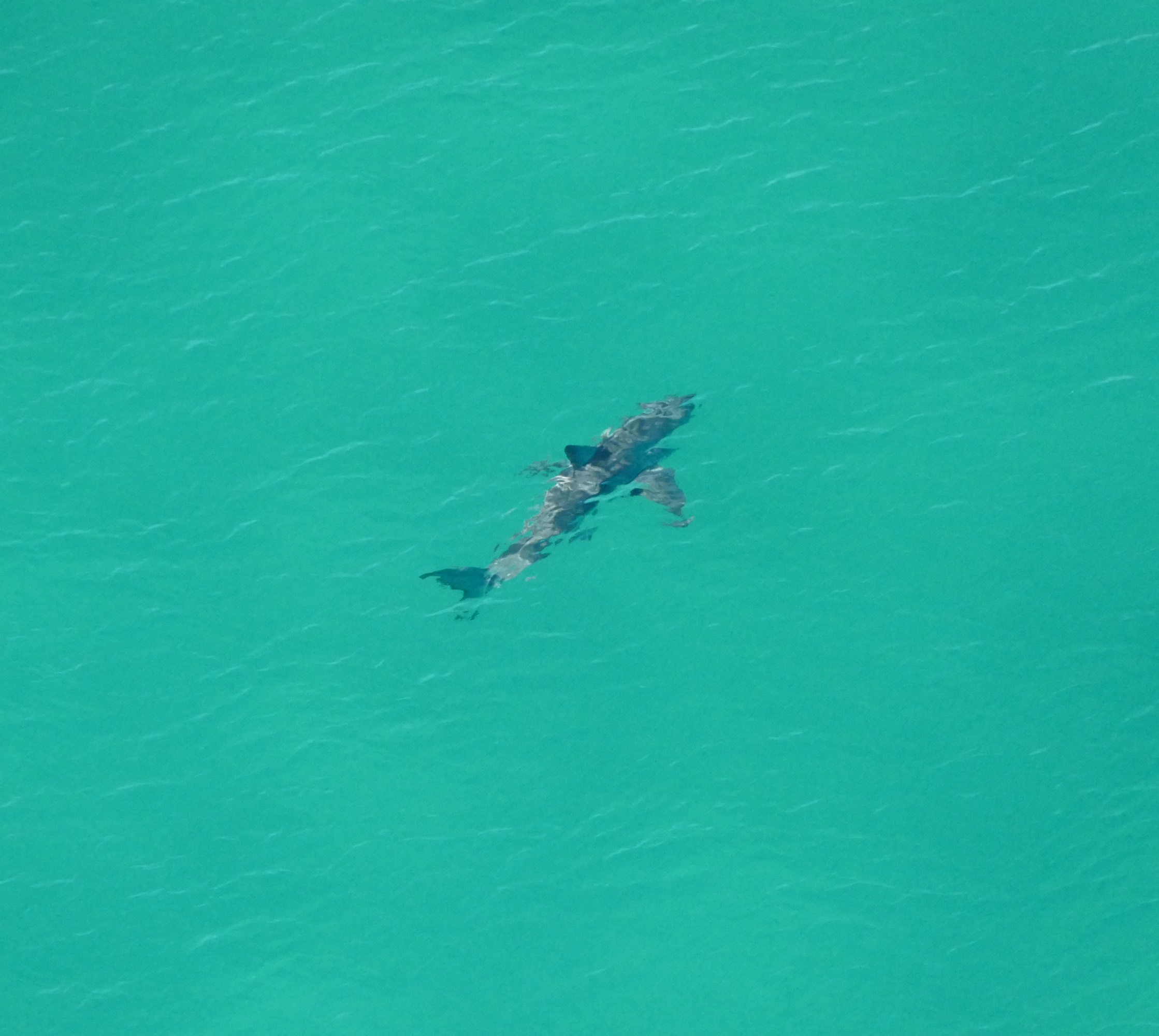Aerial shark surveillance from helicopters in metropolitan NSW coastal waters has been in action since 2009 as part of the Shark Meshing Program. Aerial surveys are also being trialled along the rest of the NSW coast as part of the Shark Management Strategy.
The trial includes weather dependent daily flights in seven regions over school holiday periods between Eden on the far south coast to Tweed in the state’s north.
- Ballina to Point Danger, Tweed Heads (104km each way);
- South Sawtell to Wooli (73km each way);
- Lighthouse Beach, Port Macquarie to Nambucca Heads (114km each way);
- Birubi to Crowdy Head (167km each way);
- South Wollongong to Stockton Beach (202km each way);
- Moruya to South Wollongong (245km each way); and
- Boyd Tower, Twofold Bay, to Bega River (75km each way).
Water users will be made very aware if the helicopter spots a potentially dangerous shark — the helicopter will reduce its height to hover, a siren will be sounded, and beach authorities are notified.
Approximately fifteen per cent of all marine wildlife sightings are sharks identified as White, Tiger or Bull Sharks. Over two thirds of these target shark sightings are of juvenile White Sharks. Approximately one tenth of sightings of target species lead to beach evacuations because the shark is close to swimmers and surfers. Current contracts run until the end of the April 2020 school holidays.
- Provides aerial surveillance at remote beaches;
- Ensures regular water evacuation and potential mitigation of shark attack; and
- Provides data collection for both sharks and their prey to assist in understanding factors influencing shark presence along the coast of NSW.
- Relatively expensive;
- Surveillance is limited at any one beach; and
- Relies on good conditions (e.g. water turbidity/sea surface chop) to allow sharks to be spotted.
What happens during aerial surveillance?
Contracted helicopters with trained observers on board search the water for sharks within 500 metres of a beach. All sharks seen are recorded via a purpose-built app. Target shark sightings are reported live to the SharkSmart app and Twitter channel to warn beachgoers and beach authorities. If the shark is close to people, a siren is activated on the helicopter and a PA used to communicate the sighting.
Beach authorities are notified and they assess whether the beach should be closed and for how long.
If requested, the helicopter will assist SLSNSW jet-skis to herd the shark out to sea or, if at a non-patrolled beach, the helicopter will move the shark offshore.


